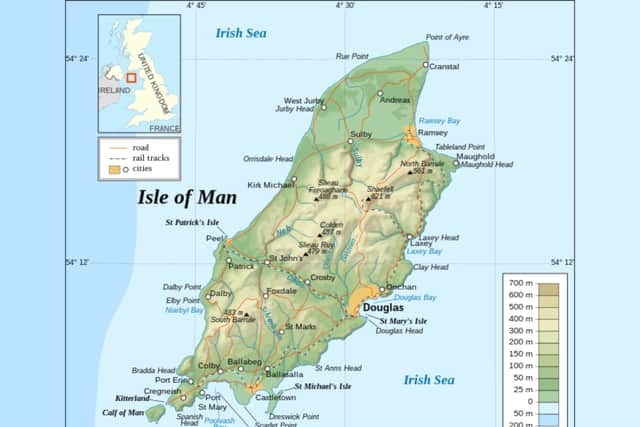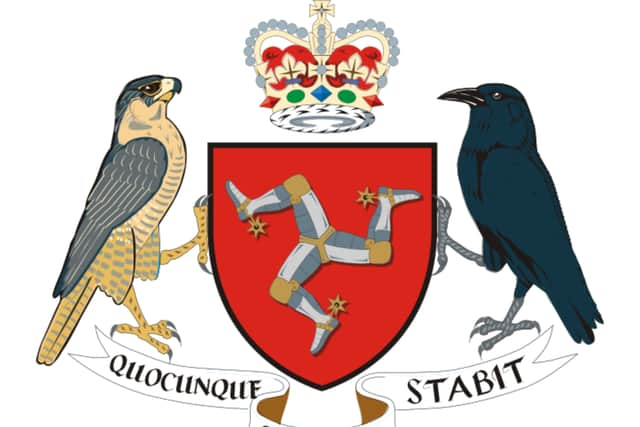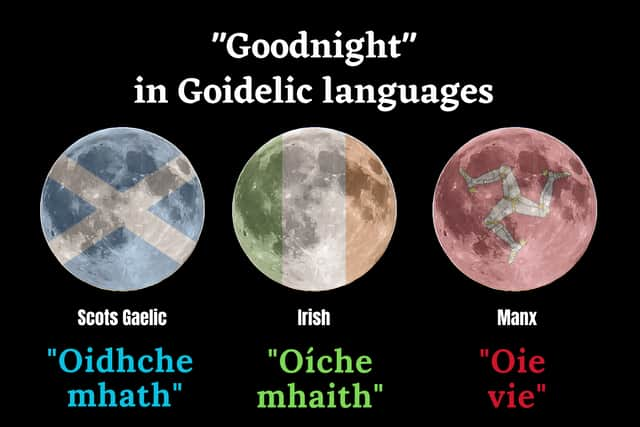Manx Gaelic: How did the Isle of Man’s ‘extinct’ Celtic tongue come back from the dead?


The Isle of Man is best known for hosting the Tourist Trophy annual motorcycle event that has seen burnt rubber on the racecourse since 1907. That, or the notorious ‘which UK nation does the Isle of Man belong to’ debate as the island is described as ‘equidistant’ between England, Ireland, Scotland and Wales (spoiler: it’s none of them, the isle has “not, and never has been, part of the United Kingdom, nor is it part of the European Union” as their government website confirms.)
That said, the seabound kingdom does reside in the heart of the Irish Sea which makes sense when we consider the similarities between the regions in terms of their Gaelic heritage and even finer aspects of their culture like shared mythology. Manx is one of three surviving tongues of the Goidelic branch of Celtic languages; the other two being Scottish Gaelic and Irish. As it stands, Welsh is the only Celtic language not considered endangered by UNESCO while Manx was declared ‘extinct’ little over a decade ago.
Advertisement
Hide AdAdvertisement
Hide AdNow, it’s been updated to “critically endangered”, which may not sound impressive but for a “revived” minority language in the age of anglicisation this is no small feat. Here’s an overview of the Manx language, how it was brought back from the dead, and what’s in store for the plucky Celtic tongue in future.


What is Manx?
Manx is the heritage language of the Manx people who are native to the Isle of Man in the Irish Sea. Known as “Gaelg” in its own tongue, Manx Gaelic was brought to the island’s shores in the fourth and fifth centuries as Irish monks embarked on a voyage to spread Christianity.
According to History Today: “The monks founded ecclesiastical settlements and carved ogham stones and, in so doing, established Gaelic as the language of the island, replacing the pre-existing Brythonic language.” Manx is also closely associated with the Gaelic of Ulster and Galloway in Scotland which shows elements of Norse by way of our connection to the Vikings, whom the Isle of Man also “encountered”.
Just as Scottish place names retain Gaelic motifs in their modern iterations, the Manx government reports that “Manx is a very visible marker of Island identity, with many street and office names being bilingual and the language is also visible in local place names such as Ballabeg (small homestead) and Ballasalla (Place of the Willow trees).”
How many people speak Manx?
The latest census revealed that over 2,200 people on the Isle of Man have an understanding of Manx Gaelic. That data was reported on by Culture Vannin’s Manx Language Development Officer, Ruth Keggin Gell, who “works to promote and support the Manx language within the community” according to the Learn Manx website.
Gell is also a well-known Manx Gaelic singer and musician with an international career, she says it’s important to “preserve, promote and protect” - a sentiment that rings true especially of endangered minoritised languages.


How was Manx brought back from the dead?
The Manx flag depicts a three-legged “triskelion” symbol which is often regarded as an ‘ancient Celtic symbol’ - the earliest use of it on the Isle of Man dates back to around 1230. The isle’s motto, which is found next to this symbol on the Manx Government crest, reads “Quocunque Jeceris Stabit” which in Latin means “whichever way you throw me, I stand”.
It attests to the resilience of the Manx people and their language which - even if barely - have survived against the odds. In 1974, the 97-year-old local fisherman and native Manx speaker Ned Maddrell died and it was thought that Manx died with him. That led UNESCO to declare Manx extinct in 2009. However, this didn’t sit right with the local primary school children who wrote a letter to UNESCO - in perfect Manx - urging them to reconsider their decision.
Advertisement
Hide AdAdvertisement
Hide AdThis move prompted the organisation to take a step back and create a new category, revitalised languages, which Manx sits in today. This outcome is attributed to the revitalisation efforts of parents in the 70s and 80s who, despite significant pushback with common sayings like “Cha jean oo cosney ping lesh y Ghailck” (you will not earn a penny with Manx), insisted on it.
Now, according to the local government: “The last 20 years have seen a resurgence in interest in the language and it is now possible to study it up to A Level standard in schools.
“Adult classes are widely available as are numerous learning resources, many of which are produced by the Manx Language Development Officer for Culture Vannin.”
Other major players credited in the revival of Manx include Brian Stowell who is well known for recording himself and Maddrell speaking Manx in the 1960s - this interview can be found on YouTube.


Why is the Isle of Man so called?
Some sources say that the Isle of Man is named after the mythological figure Manannán who is often interpreted as a Celtic sea god. Others suggest he was named after the island. An ancient Manx poem from 1504 describes the first king of the Isle of Man as “Manannan-beg-mac-y-Lheirr” which can be translated to “little Manannan, son of the Sea” - appropriate given Mann’s seabound geography.
The poem describes how he used his magical powers to defend the island by conjuring illusions like mist or armies. Other early documents describe how Manannan would create illusions of fleets to repel Viking invaders.


Is Manx, Irish and Scottish Gaelic mutually intelligible?
Just as Scots Leid is a sister language of English, Manx is a sister language of Irish and Scottish Gaelic as all three have Primitive Irish ancestry in common. As the Goidelic languages spread across the British Isles, they diverged and evolved to become distinct from one another.
However, as said by the Irish Language Matters blog, “Spoken Irish and Manx are partially mutually intelligible” just as Scots Gaelic and Irish are too; so three-way comprehension is possible. However, the key difference is the orthography of Manx which is said to be “quite different from that of Irish or Scots Gaelic.”
What’s next for Manx?
Advertisement
Hide AdAdvertisement
Hide AdThe latest census showed that roughly 2,200 people of the 84,069 living on the Isle of Man could speak, read or write in Manx. The new Manx Language Strategy 2022-2032 aims to take that figure and boost it to 5,000 by expanding the ongoing effort to revive the island’s native language.
The BBC reported that the new strategy outlines “a comprehensive strategy for Manx language broadcasting, the coordination of a minority languages webinar, and strengthening links between Manx-speaking organisations.”
Although Manx is not available on Duolingo like Gaelic, the Manx Heritage Foundation recommends the Learn Manx website “to find out more about the Manx language and how you can learn it, wherever you live.”
Comments
Want to join the conversation? Please or to comment on this article.
